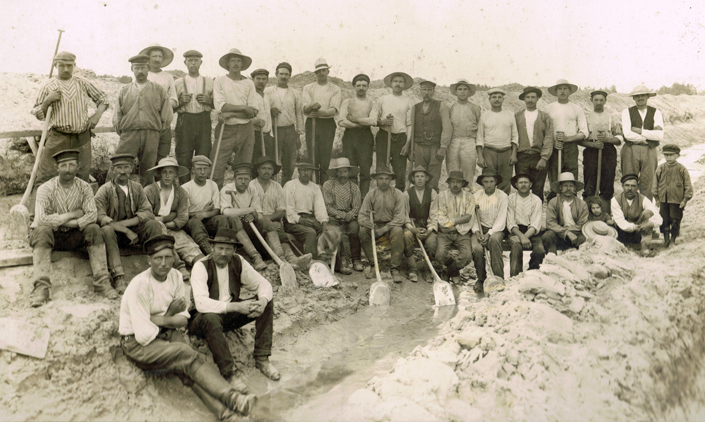|
Mästermyr
Mästermyr is a, now mostly drained, mire west of Hemse on the island of Gotland, Sweden. The Mästermyr chest was found here in 1936. Geography The area of the mire was originally , of which consisted of small lakes. It was a significant habitat for water birds and the lakes were used for fishing. A suggestion about draining the mire was first presented in 1898. The mire was drained in 1902–10. Some of the lakes that dried up were ''Tunngansträsk'', ''Storträsk'', ''Nydträsk'', ''Risalaträsk'' and ''Eskesträsk''. Just south of the mire is the Havor Iron Age hillfort. At the time it was built, the mire was still lakes and the fort was located on the shore of one of these. In 1961, an archaeological excavation of the hillfort lead to the discovery of the Havor Hoard. History As part of a national program for public works to reduce unemployment in 1920–21, a total of of roads were constructed at Mästermyr. By the 1930s, of the former mire was cultivated. On 21A ... [...More Info...] [...Related Items...] OR: [Wikipedia] [Google] [Baidu] |
Mästermyr Chest
The Mästermyr chest is a Viking Age (793–1066) tool chest found in the Mästermyr mire west of Hemse on the island of Gotland, Sweden. It is the largest tool find from that era in Europe. History During the Viking Age the area where Mästermyr mire is located, used to be a lake. The mire was drained in 1902–10. In October 1936, the chest was found by farmer Hugo Kraft in a field owned by Emil Norrby in Snoder, Sproge near Hemse. It was found in an area that was plowed for the first time. The chest is now on display in the Swedish History Museum in Stockholm. Find Most of the find had been placed in the chest, but there were also objects around it such as three bronze cauldrons, three bells and a fire-grid of iron. A chain, made up of 26 figure-of-eight shaped links, was wrapped around it. It served both as an extra lock and handle since the chest was too heavy for the original handle. The chest and the other items had probably been placed in a boat which capsized an ... [...More Info...] [...Related Items...] OR: [Wikipedia] [Google] [Baidu] |
Gotland
Gotland (, ; ''Gutland'' in Gutnish), also historically spelled Gottland or Gothland (), is Sweden's largest island. It is also a province, county, municipality, and diocese. The province includes the islands of Fårö and Gotska Sandön to the north, as well as the Karlsö Islands (Lilla and Stora) to the west. The population is 61,001, of which about 23,600 live in Visby, the main town. Outside Visby, there are minor settlements and a mainly rural population. The island of Gotland and the other areas of the province of Gotland make up less than one percent of Sweden's total land area. The county formed by the archipelago is the second smallest by area and is the least populated in Sweden. In spite of the small size due to its narrow width, the driving distance between the furthermost points of the populated islands is about . Gotland is a fully integrated part of Sweden with no particular autonomy, unlike several other offshore island groups in Europe. Historically there w ... [...More Info...] [...Related Items...] OR: [Wikipedia] [Google] [Baidu] |


